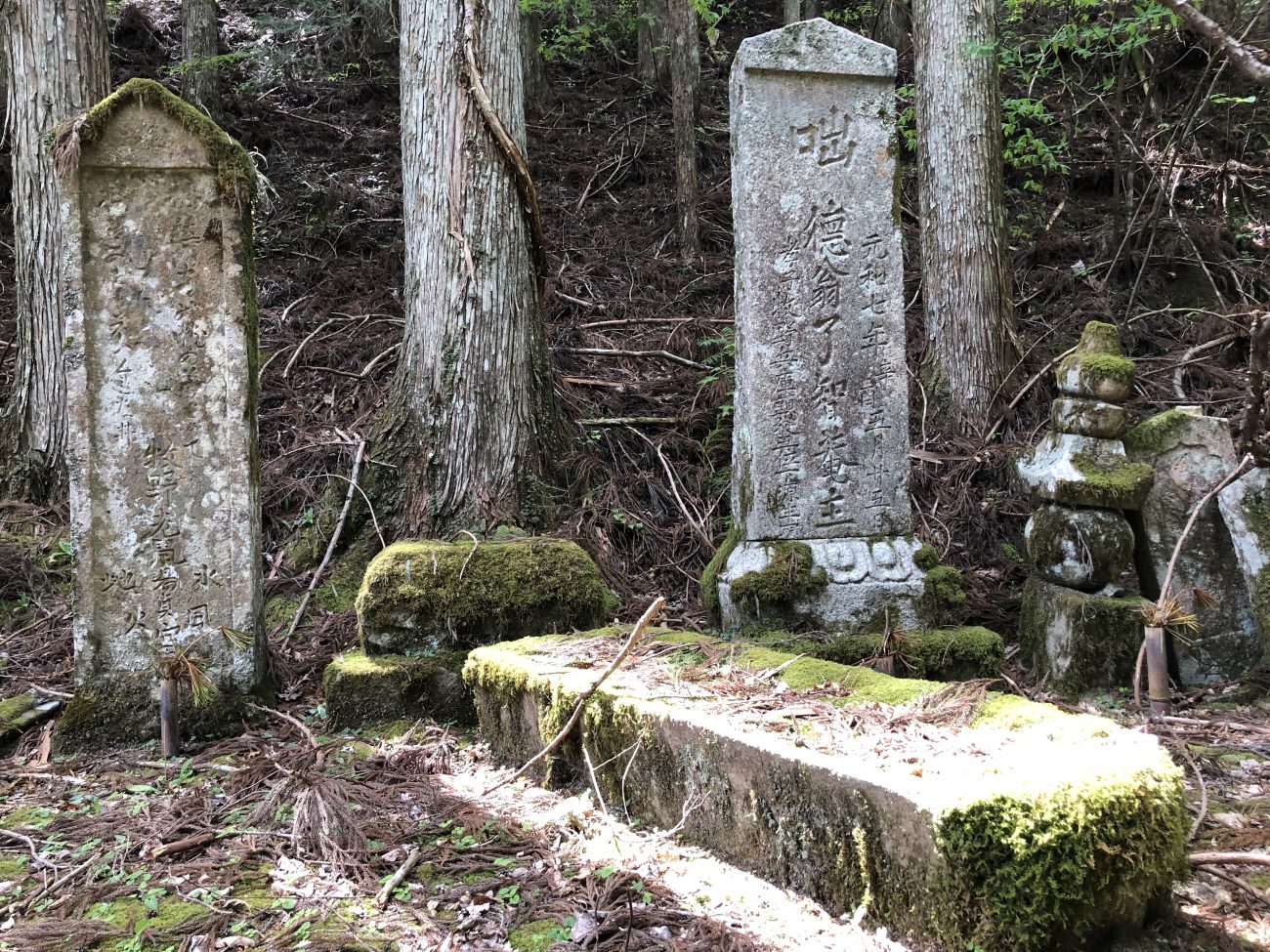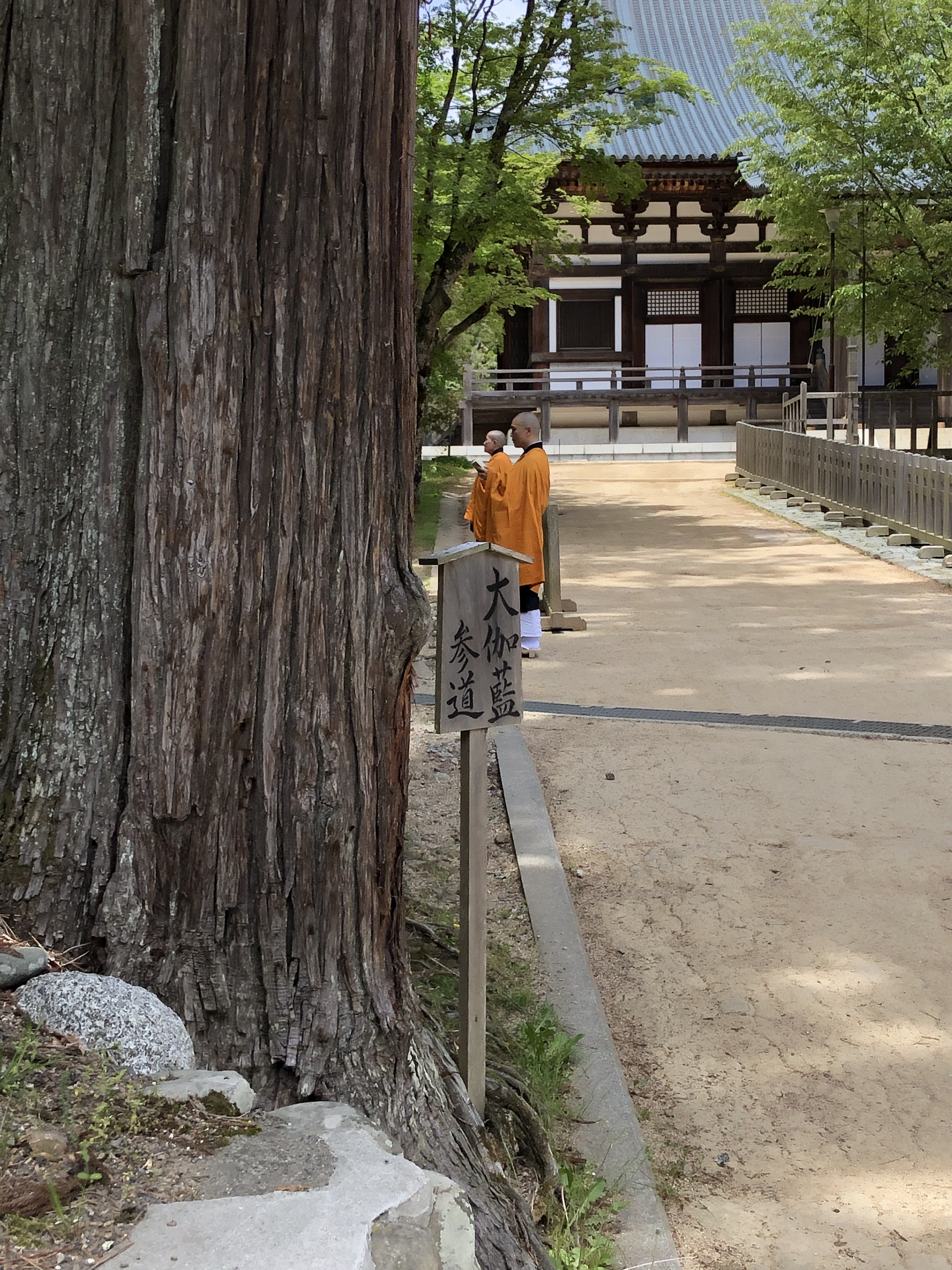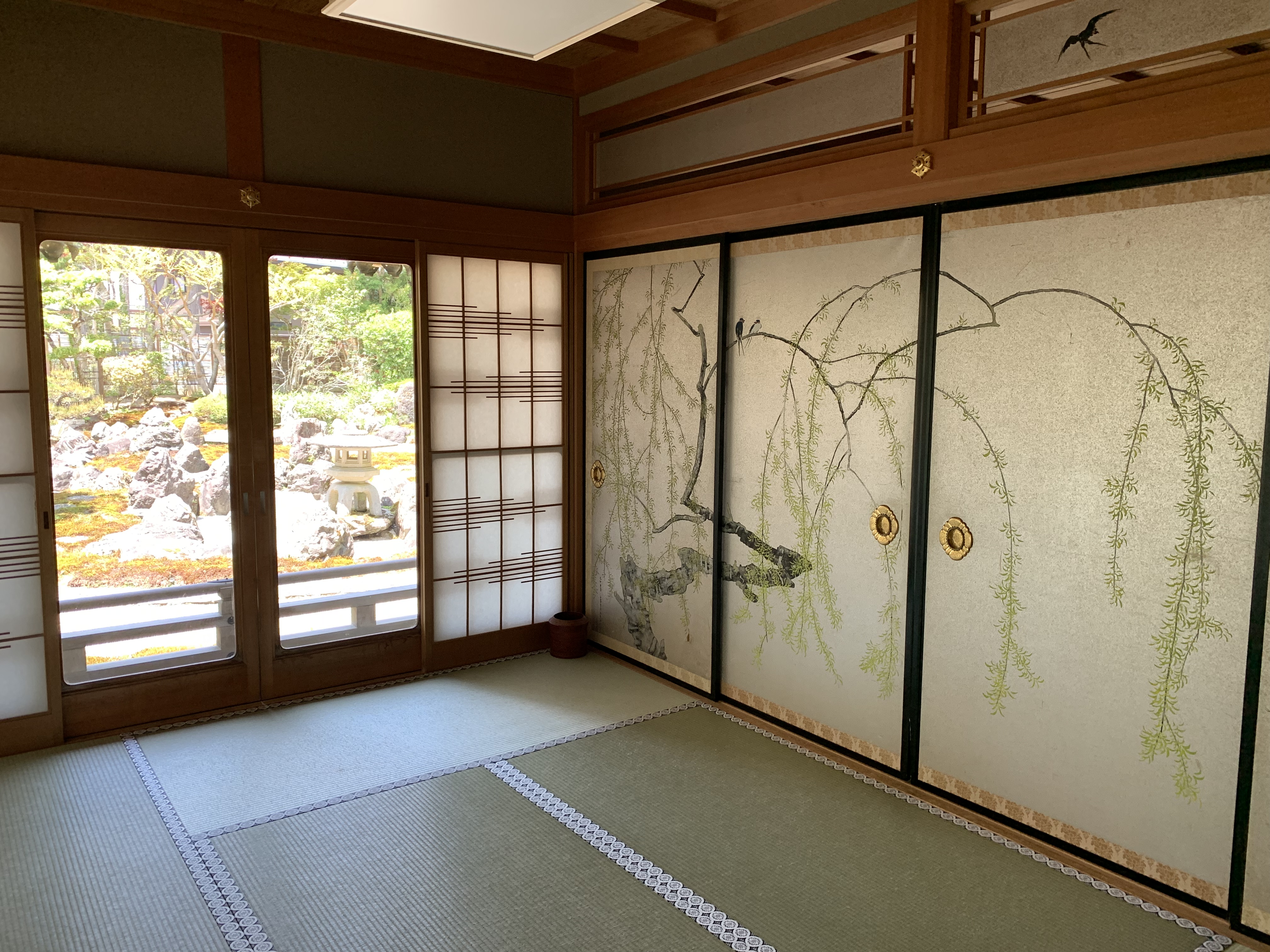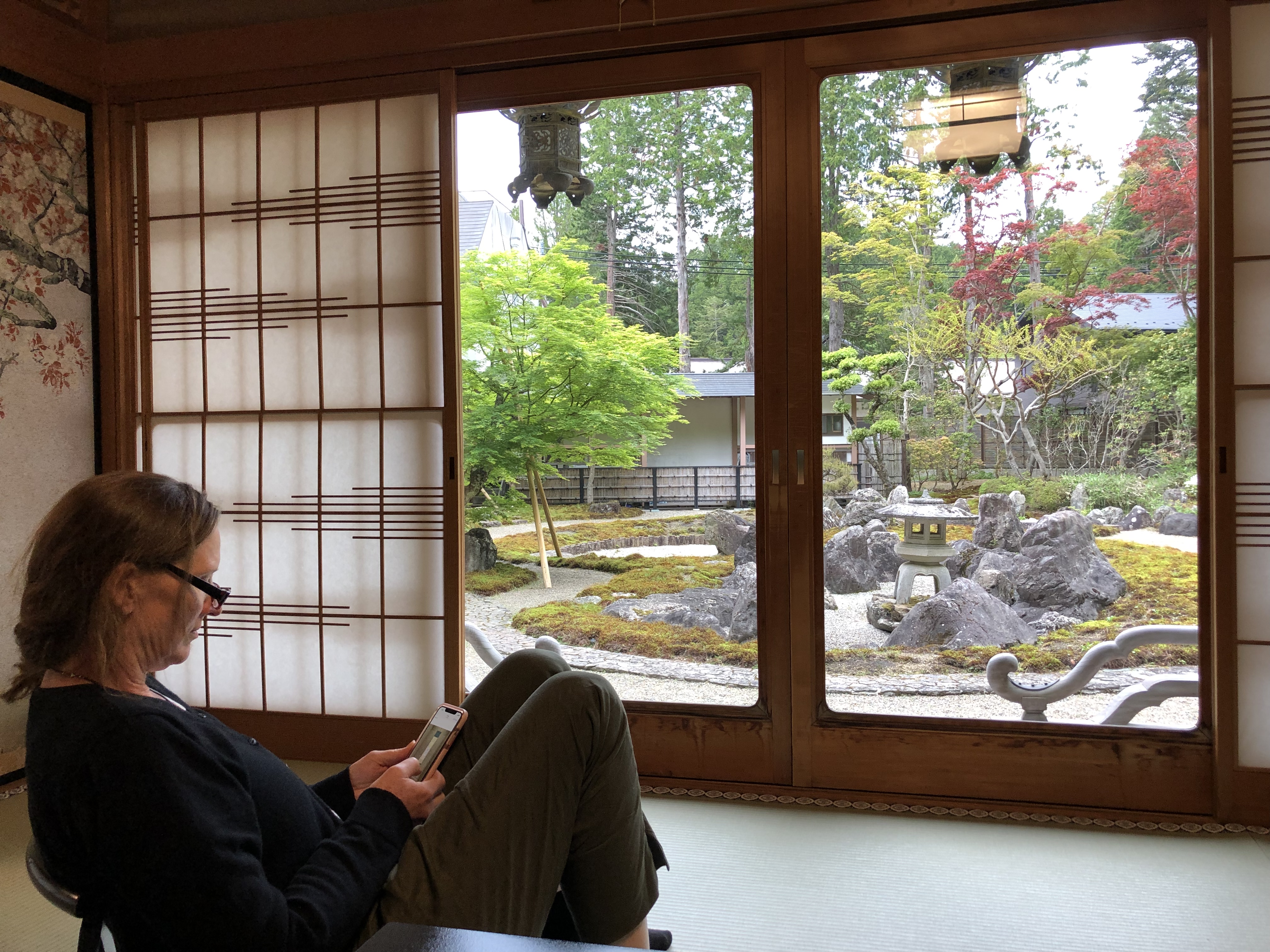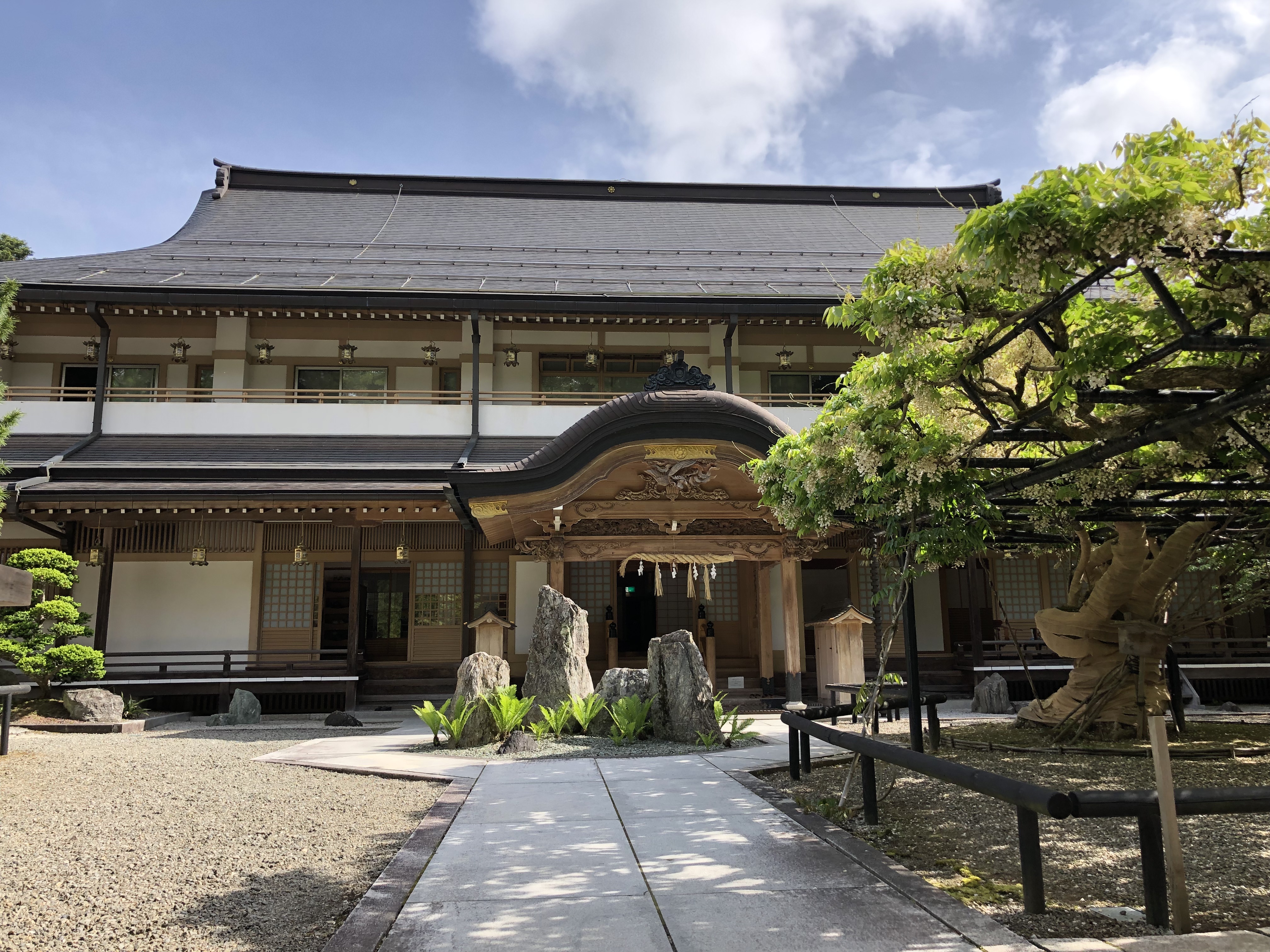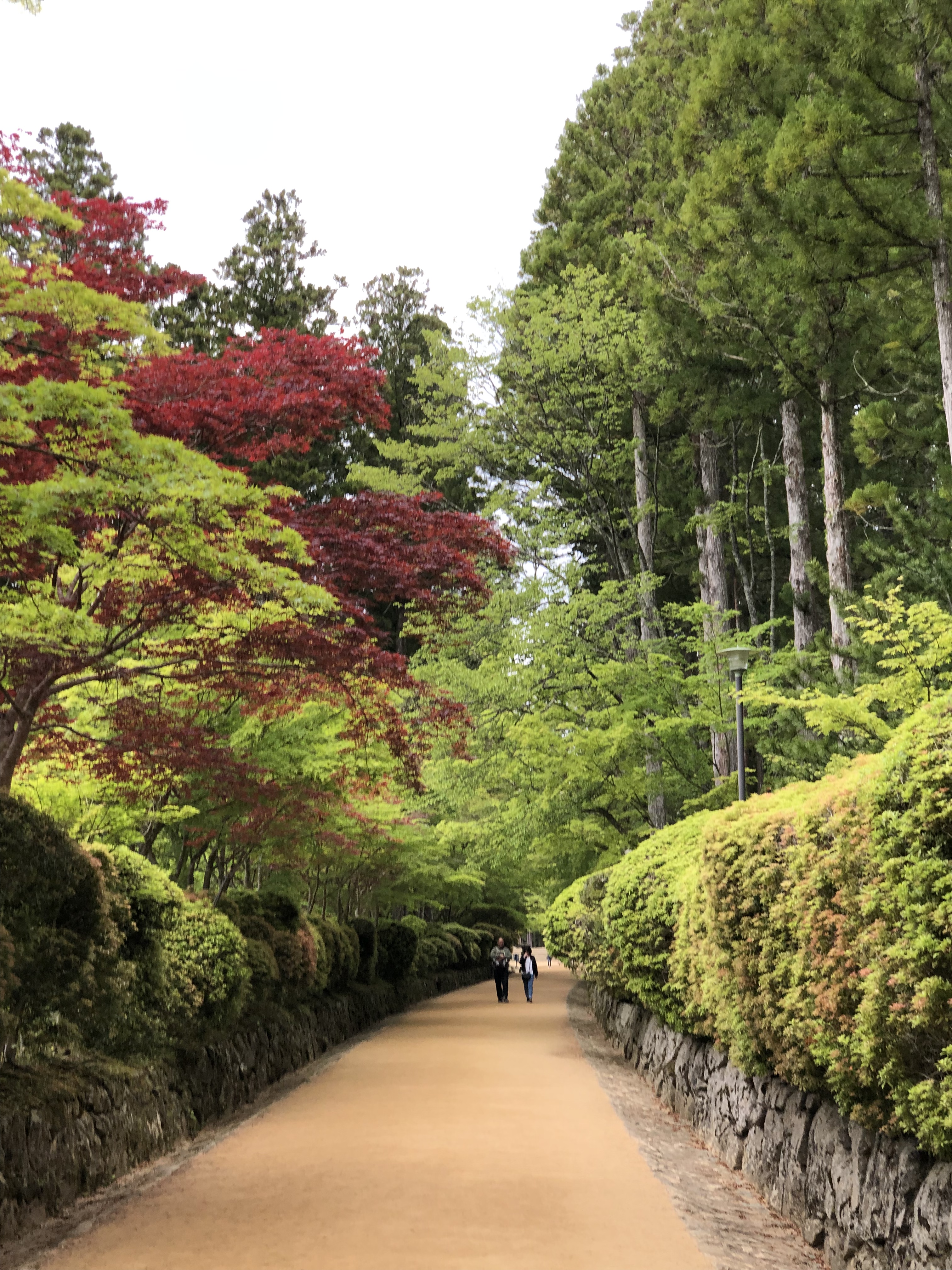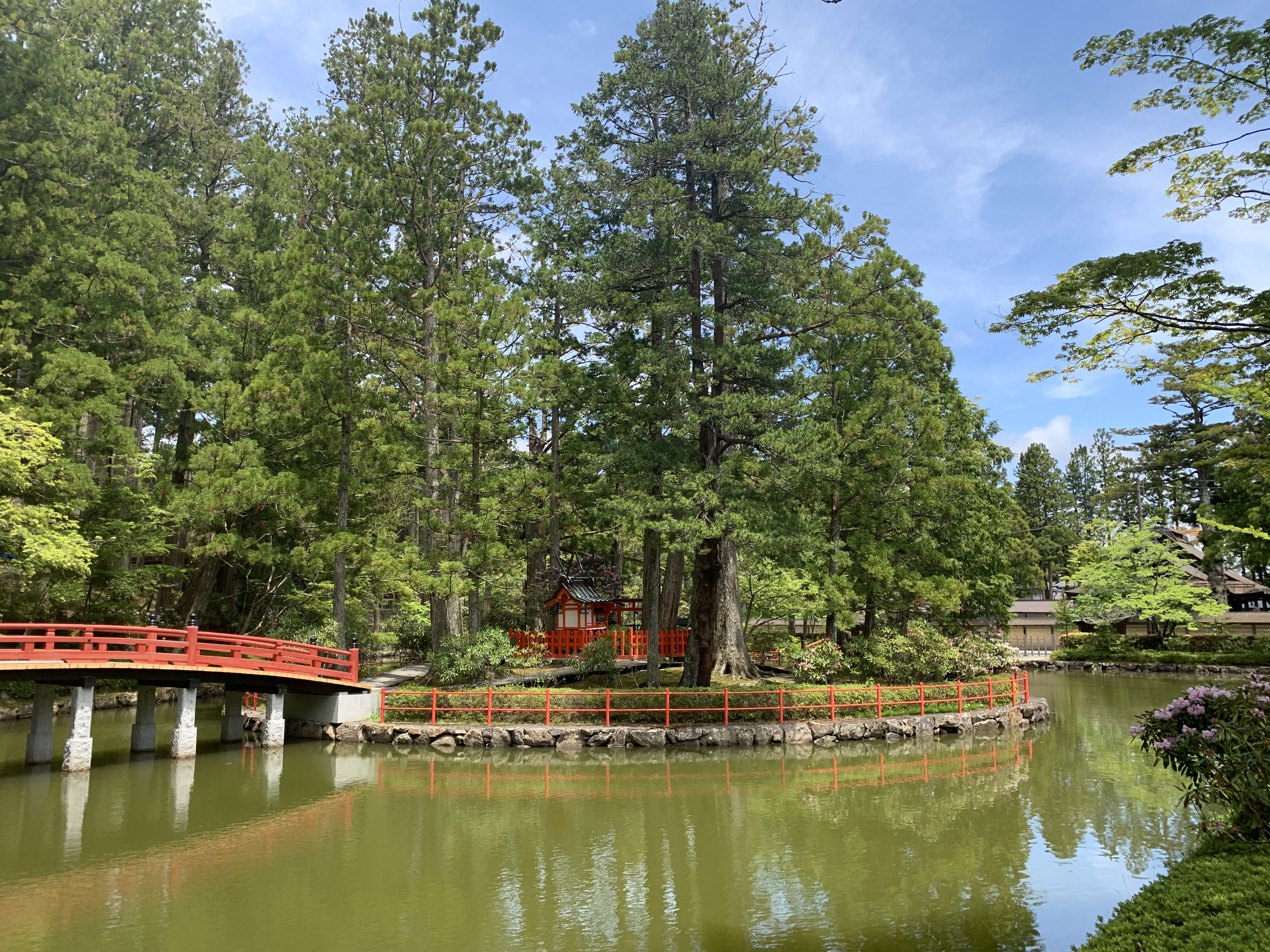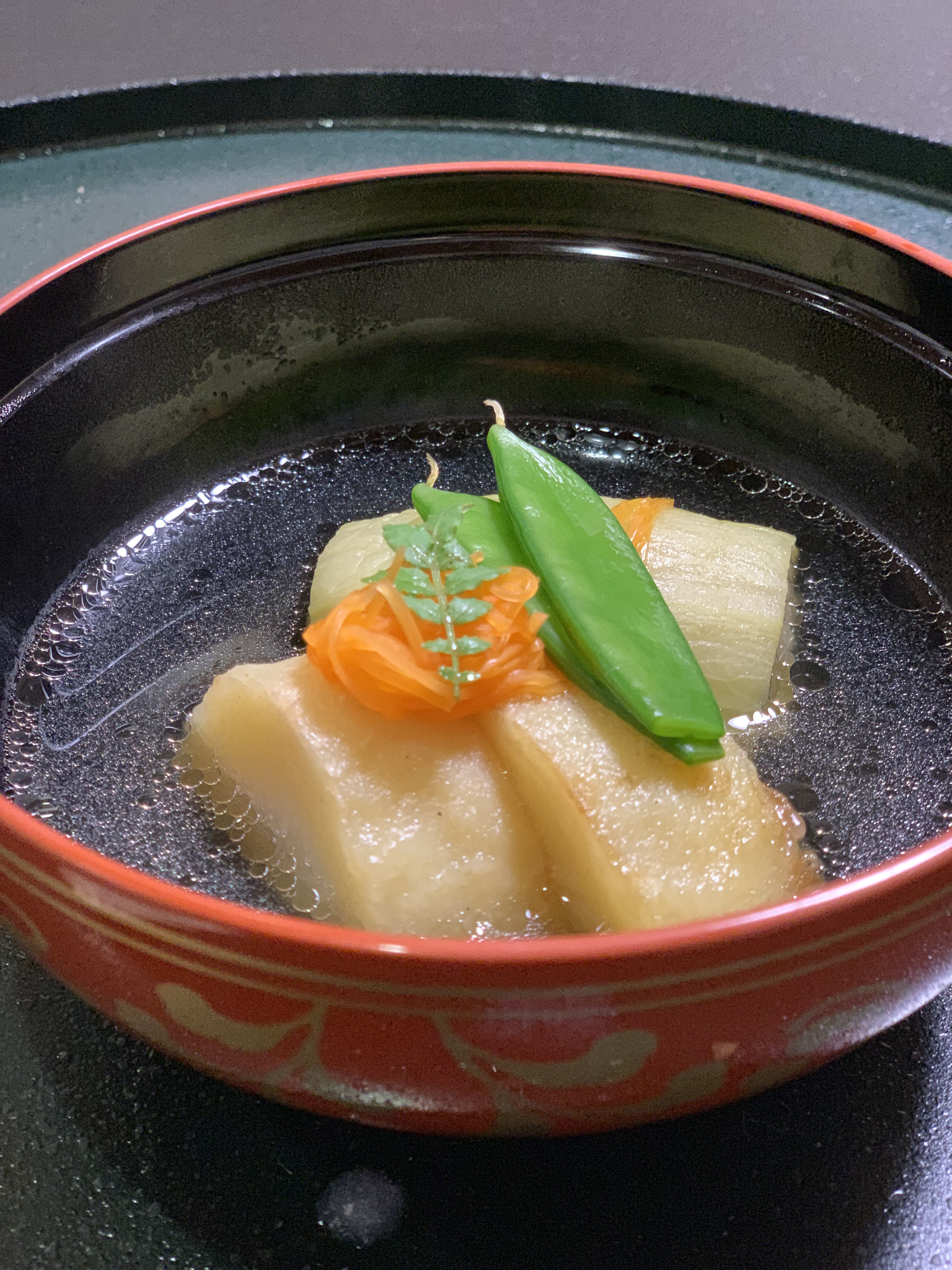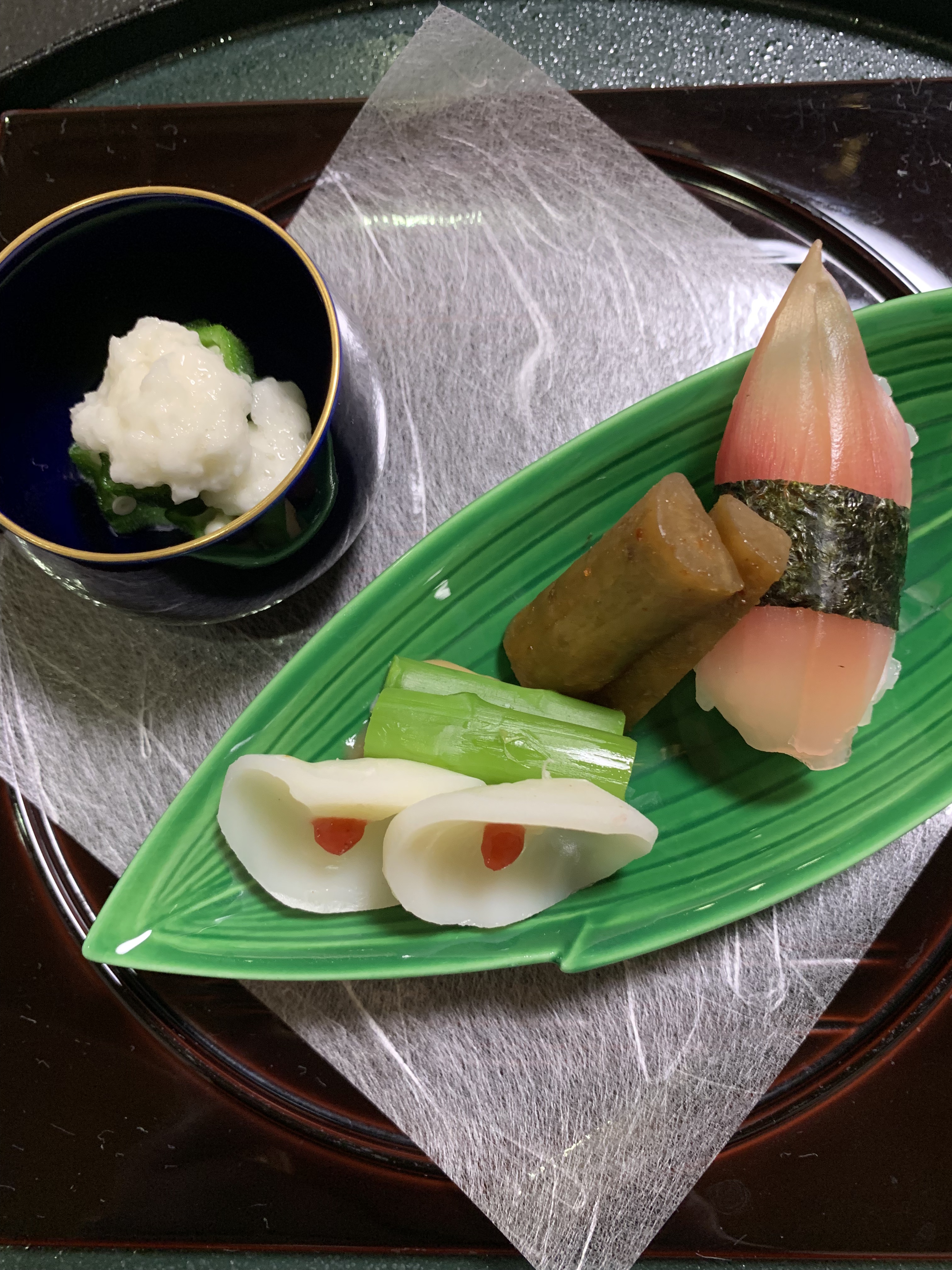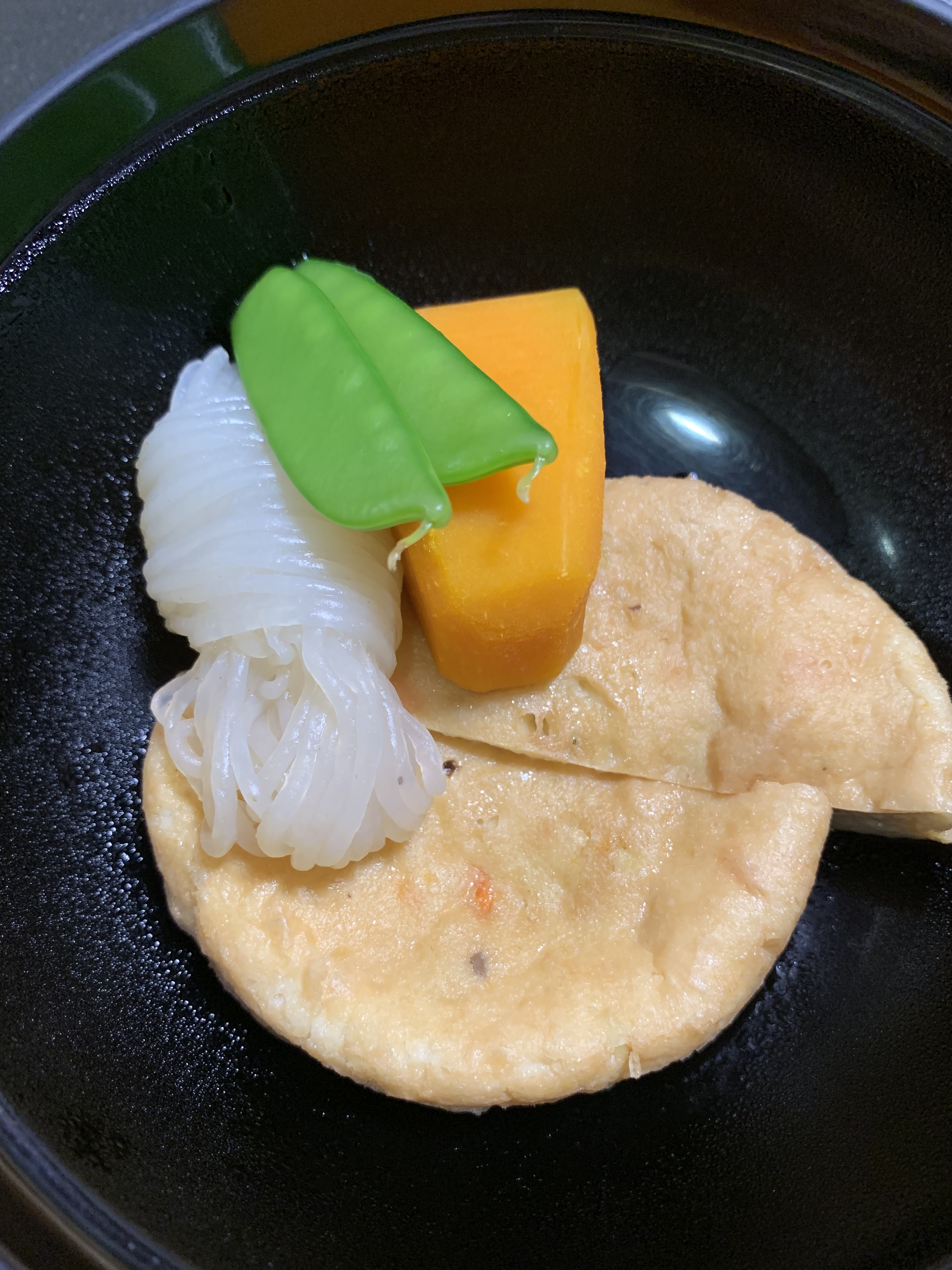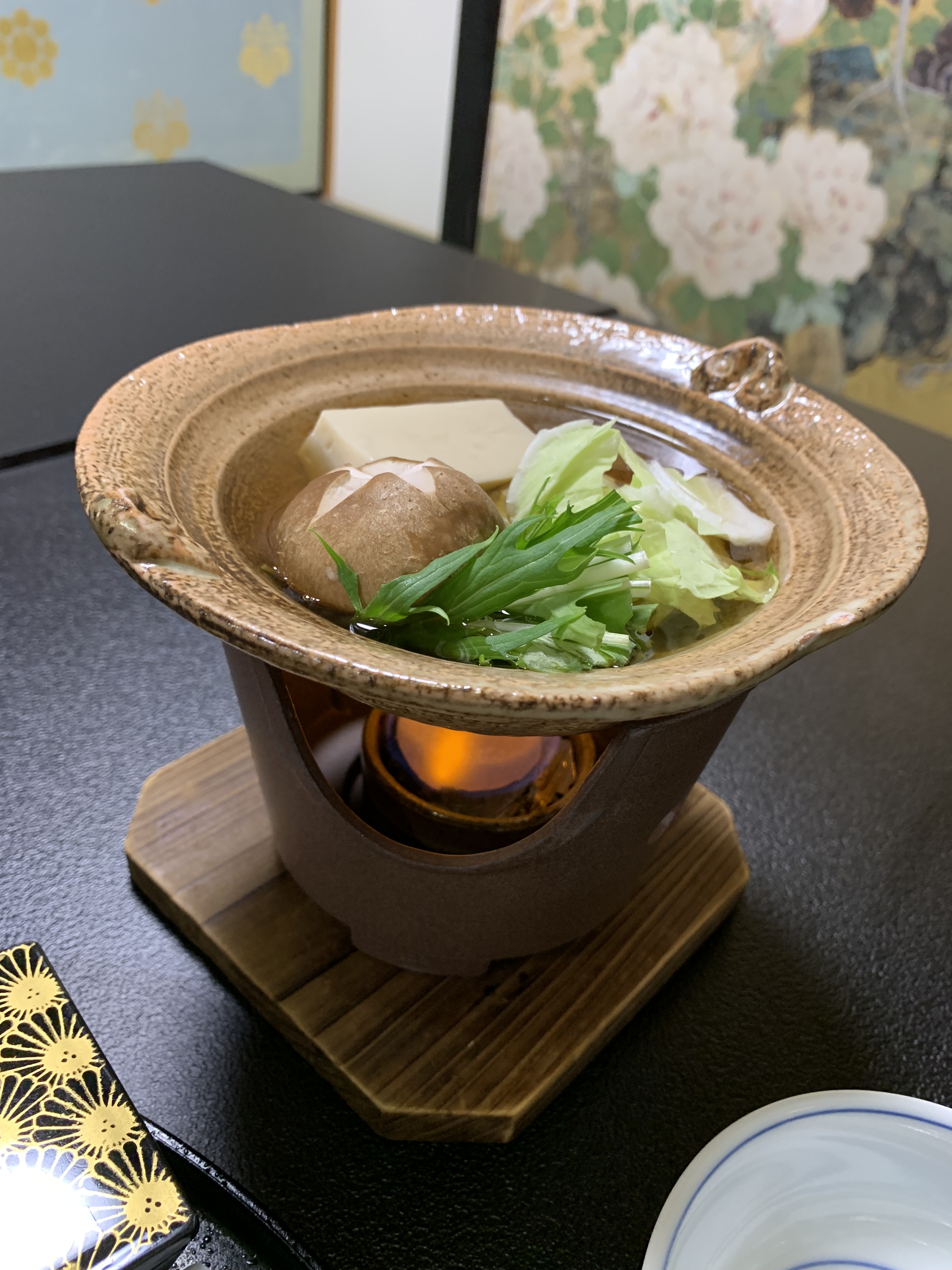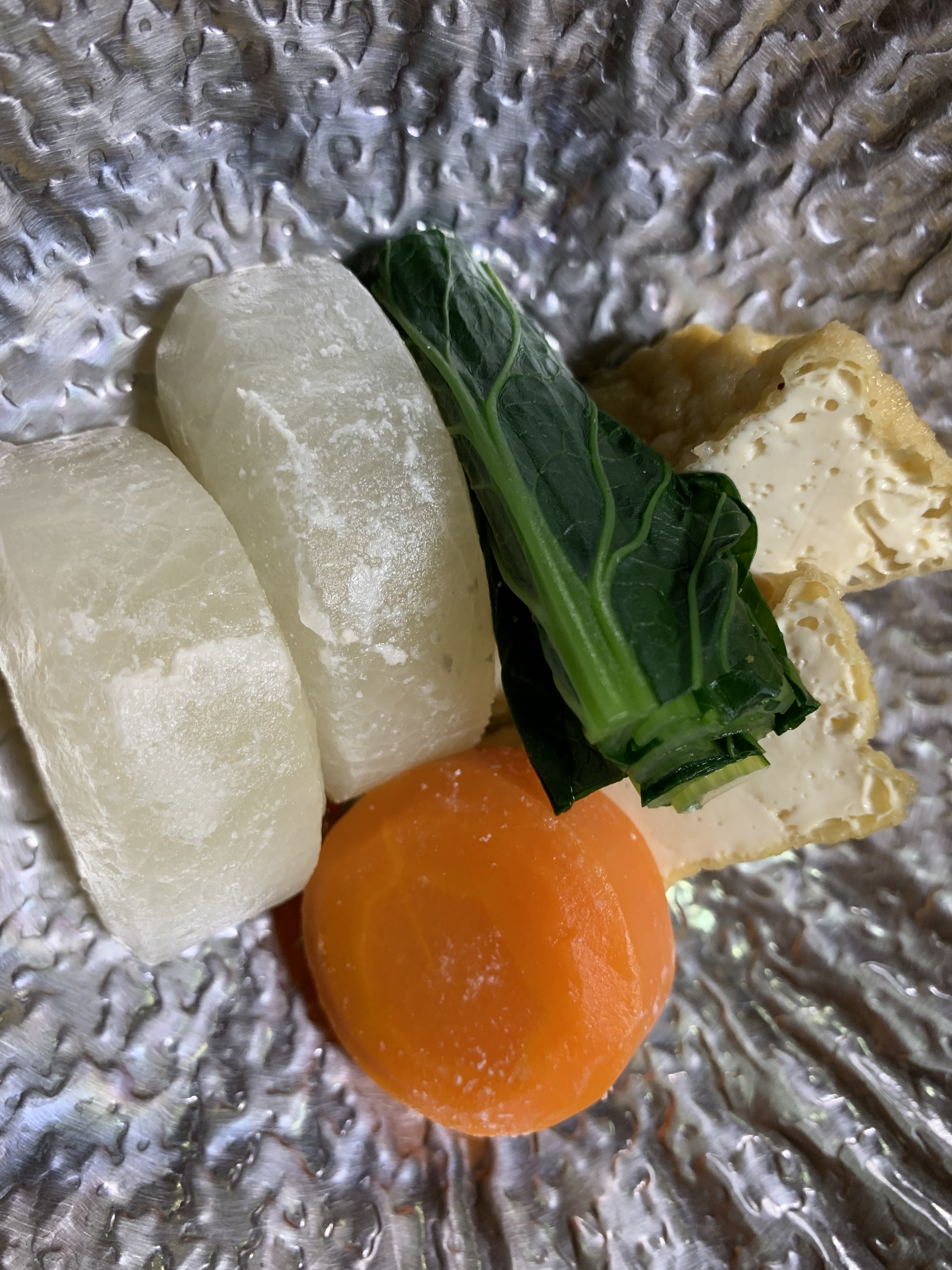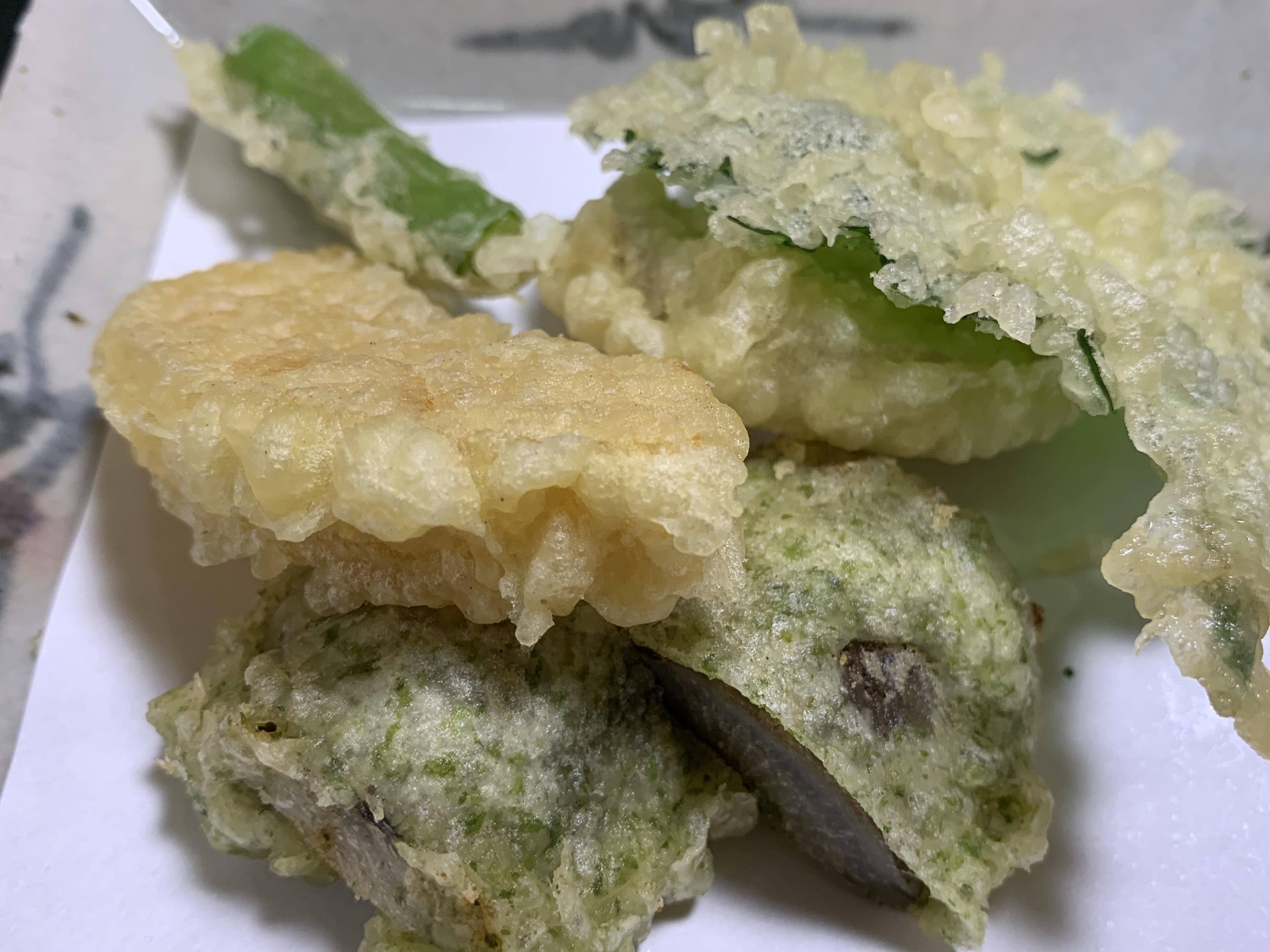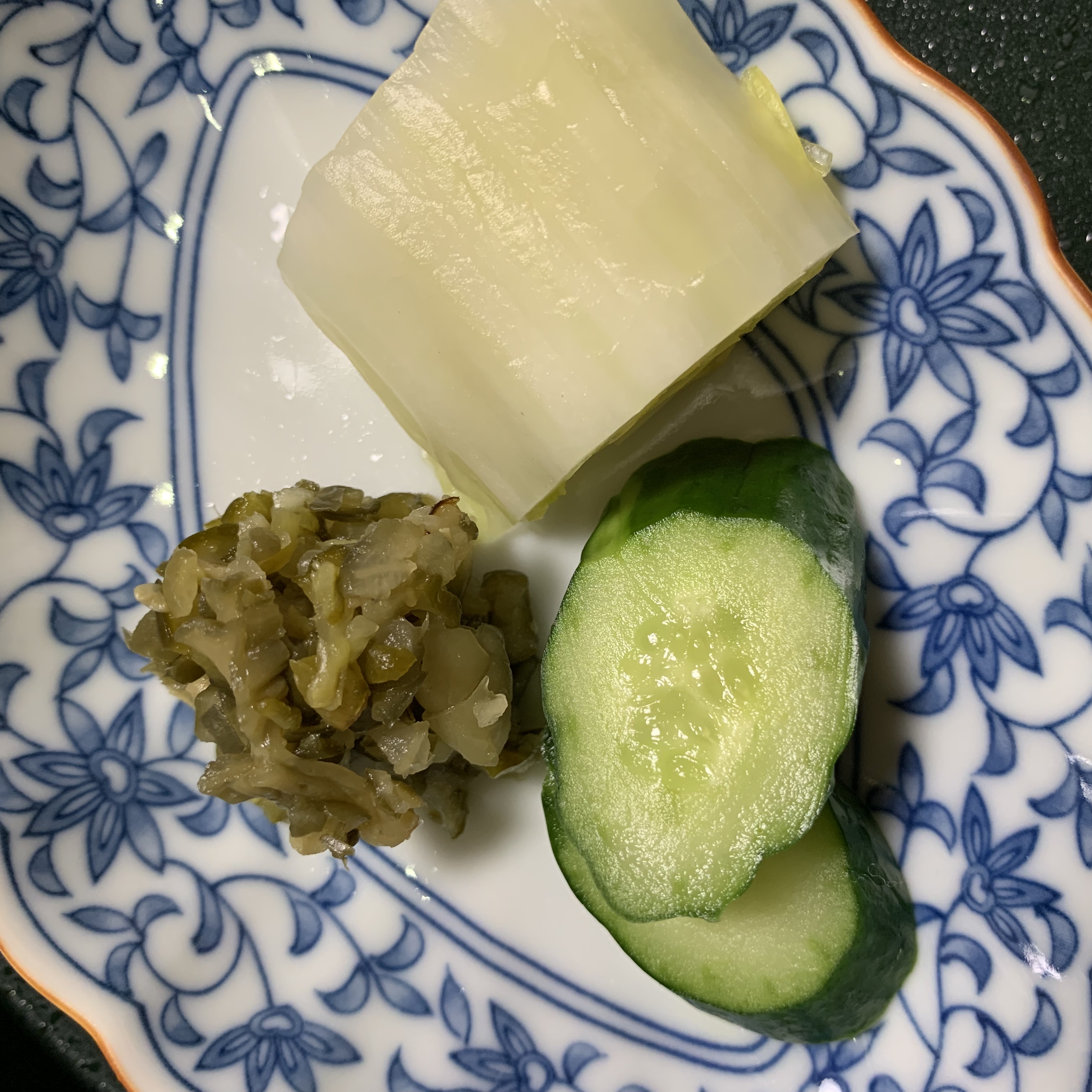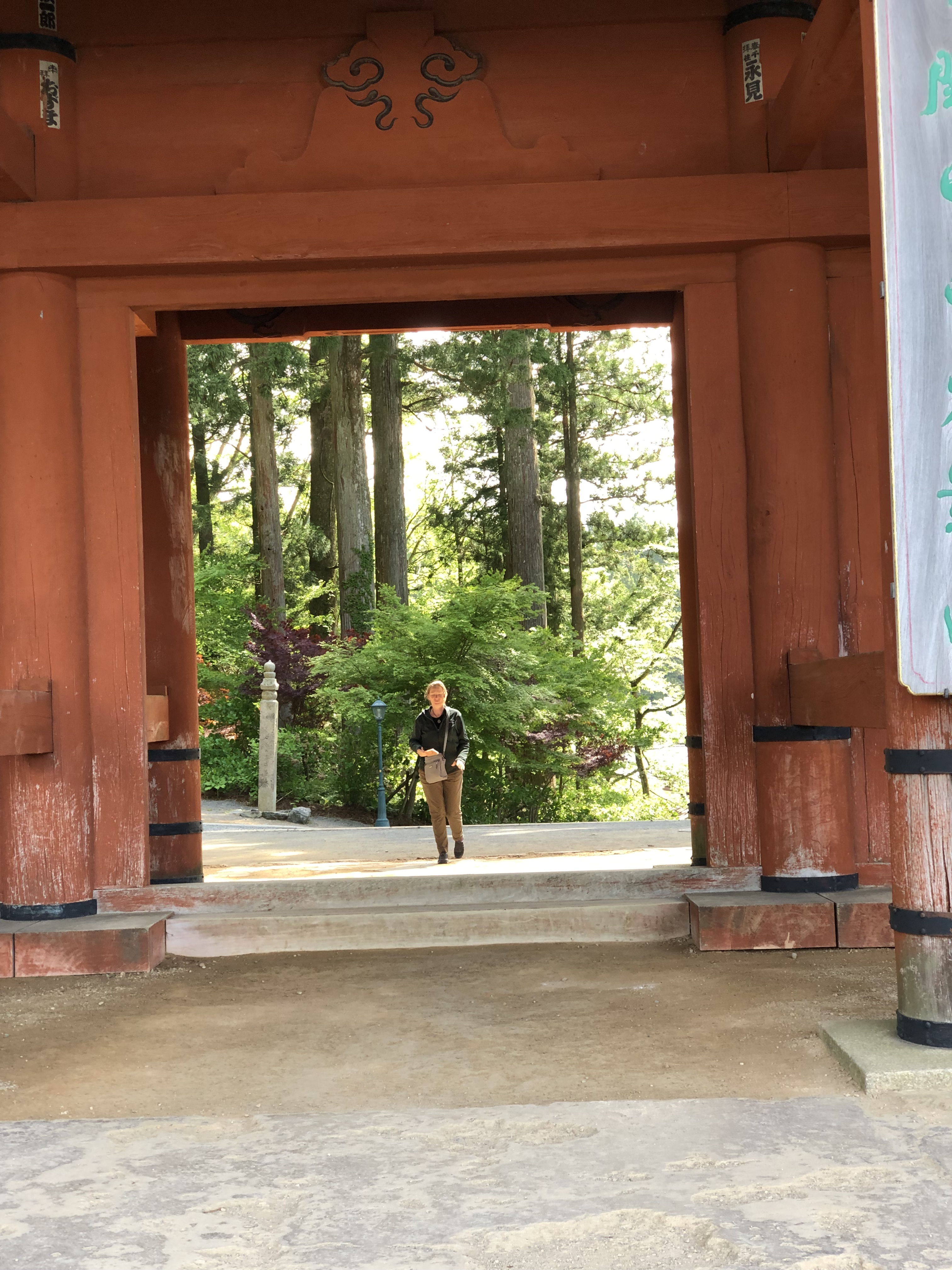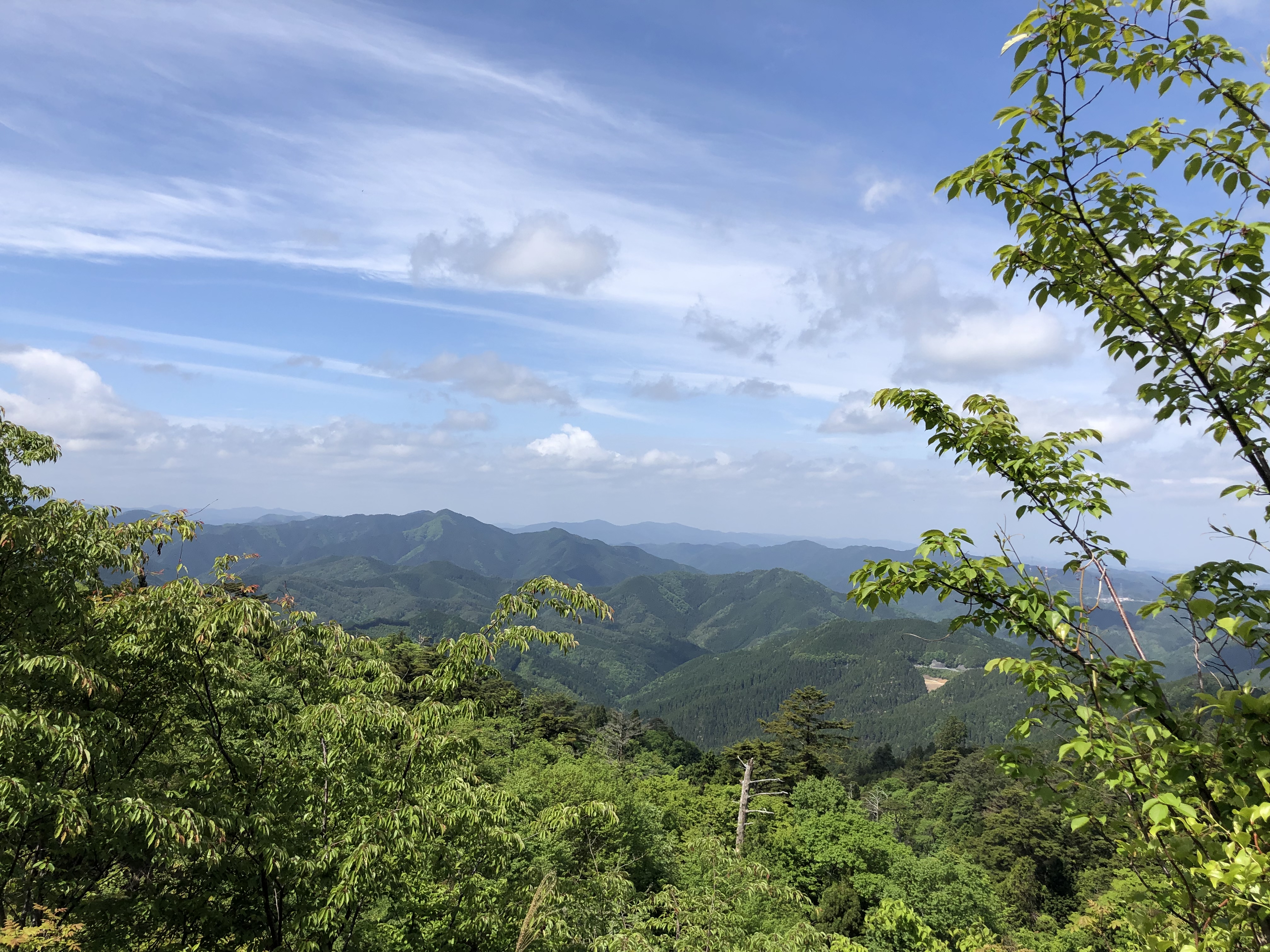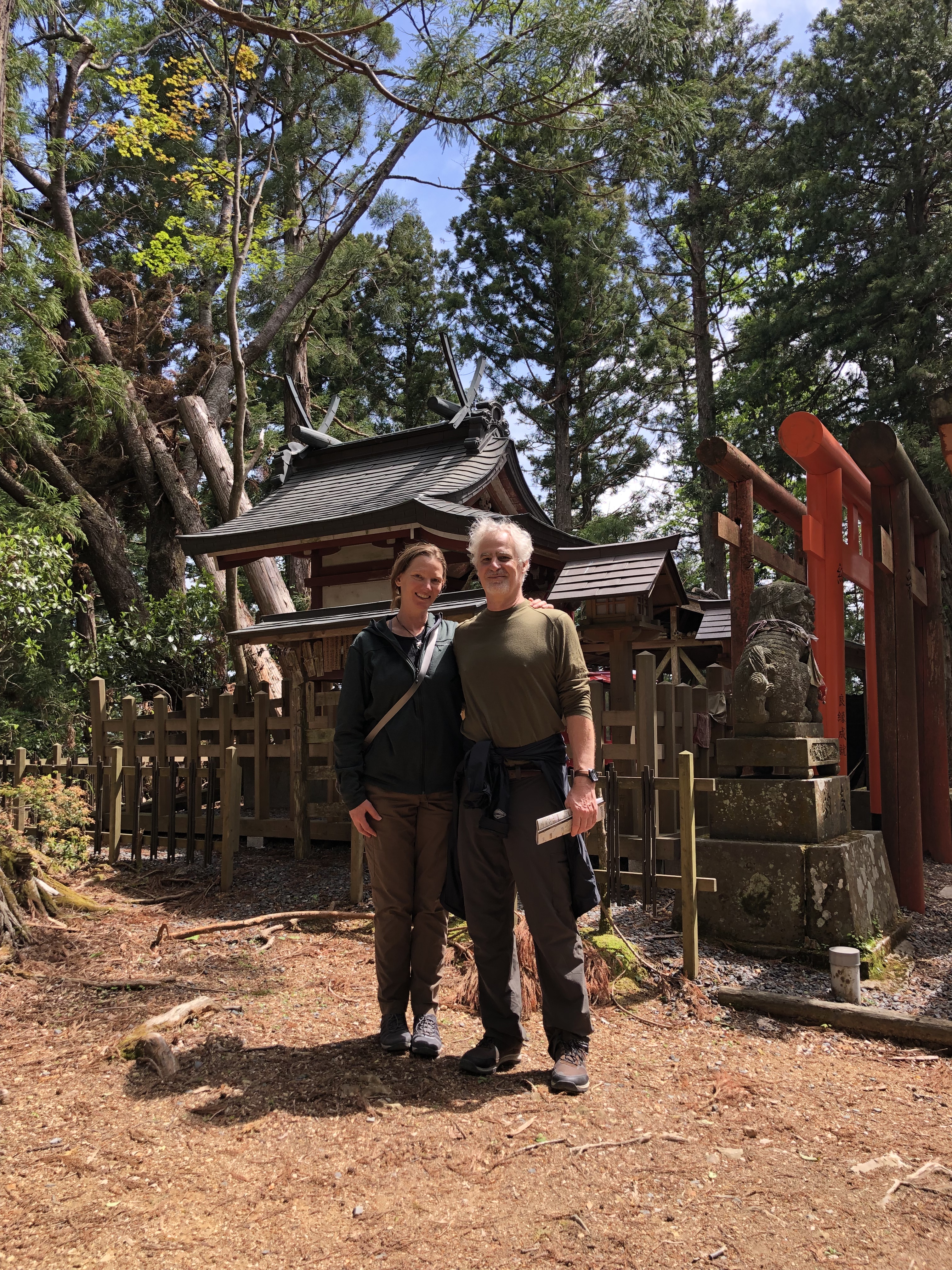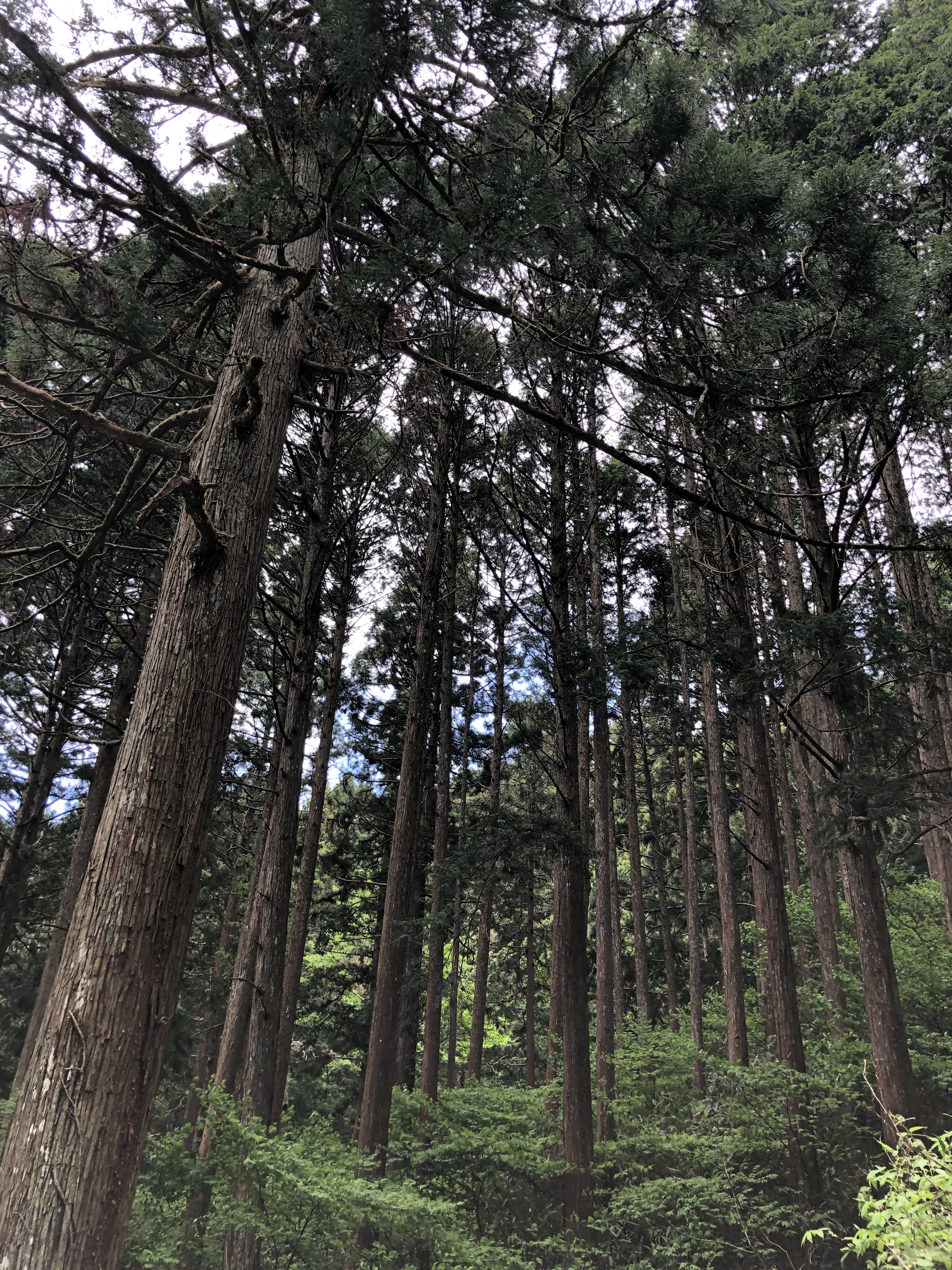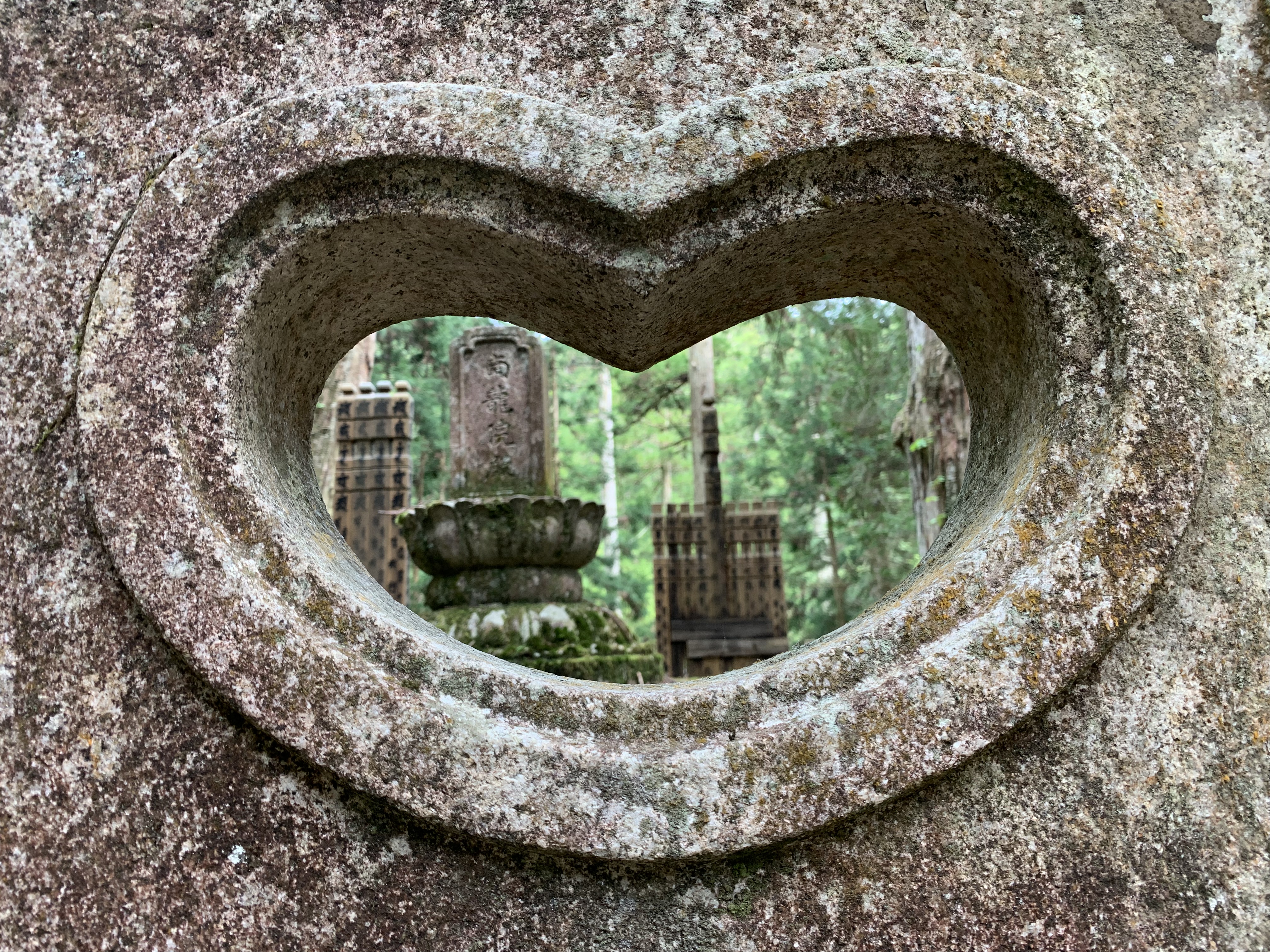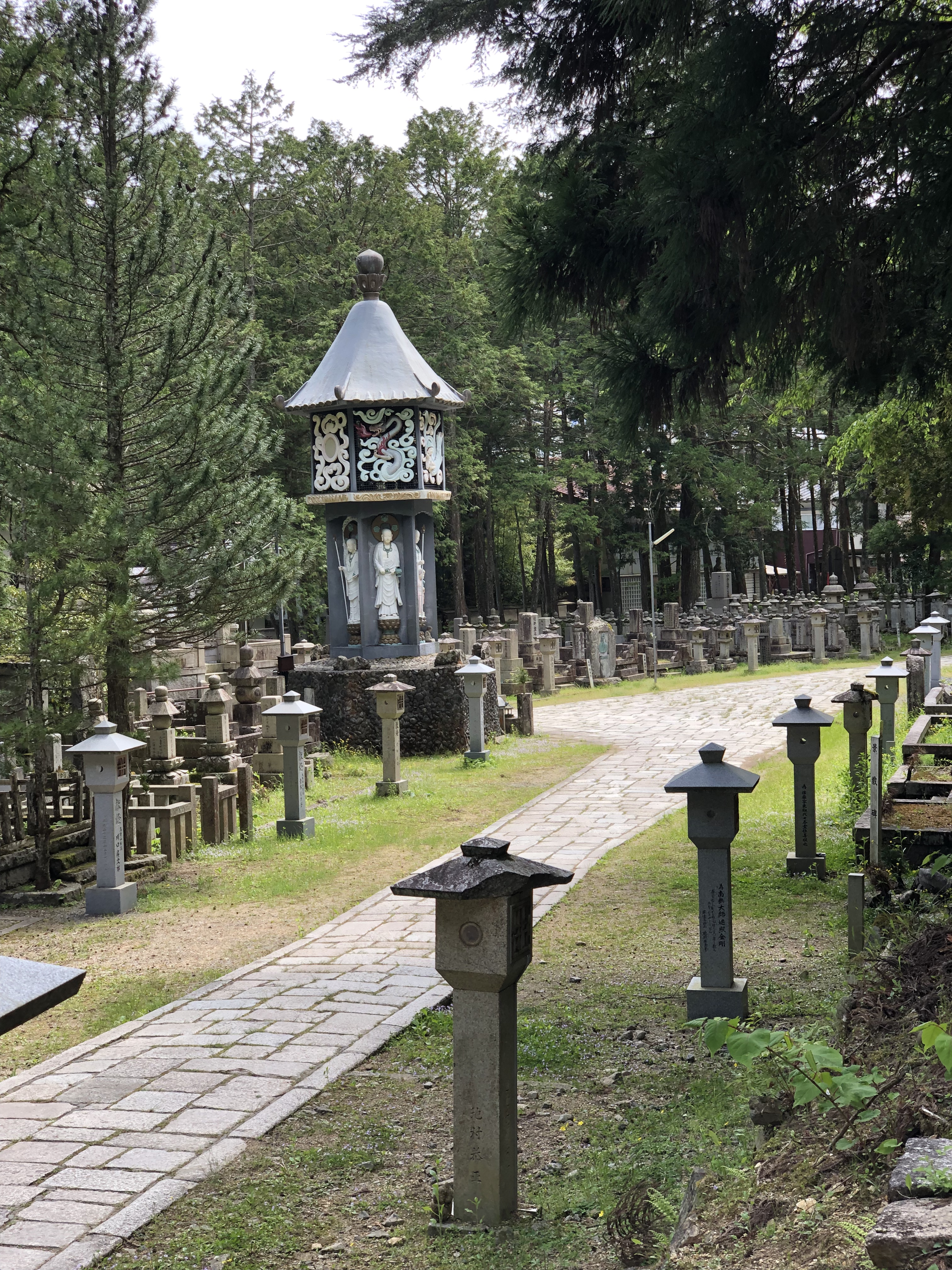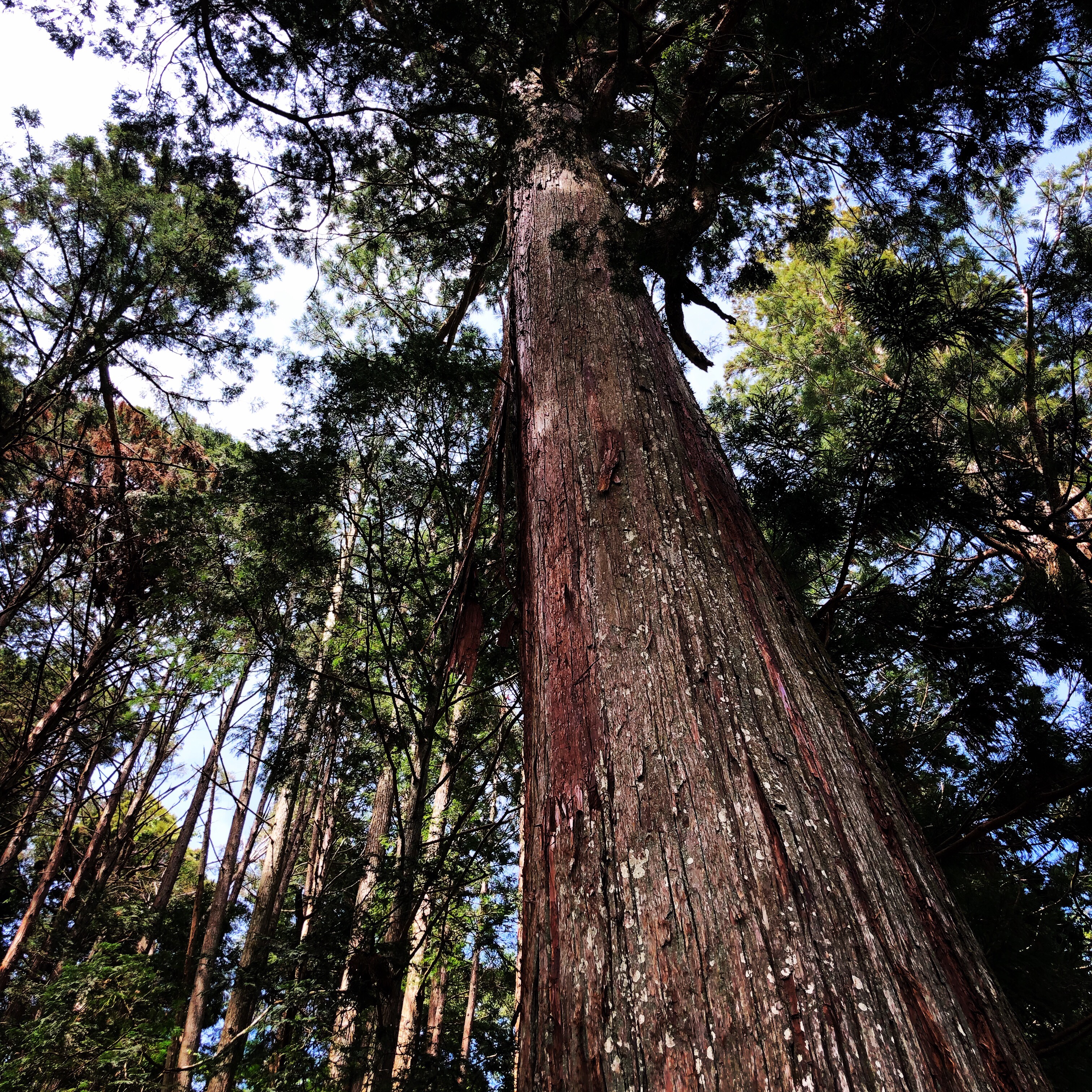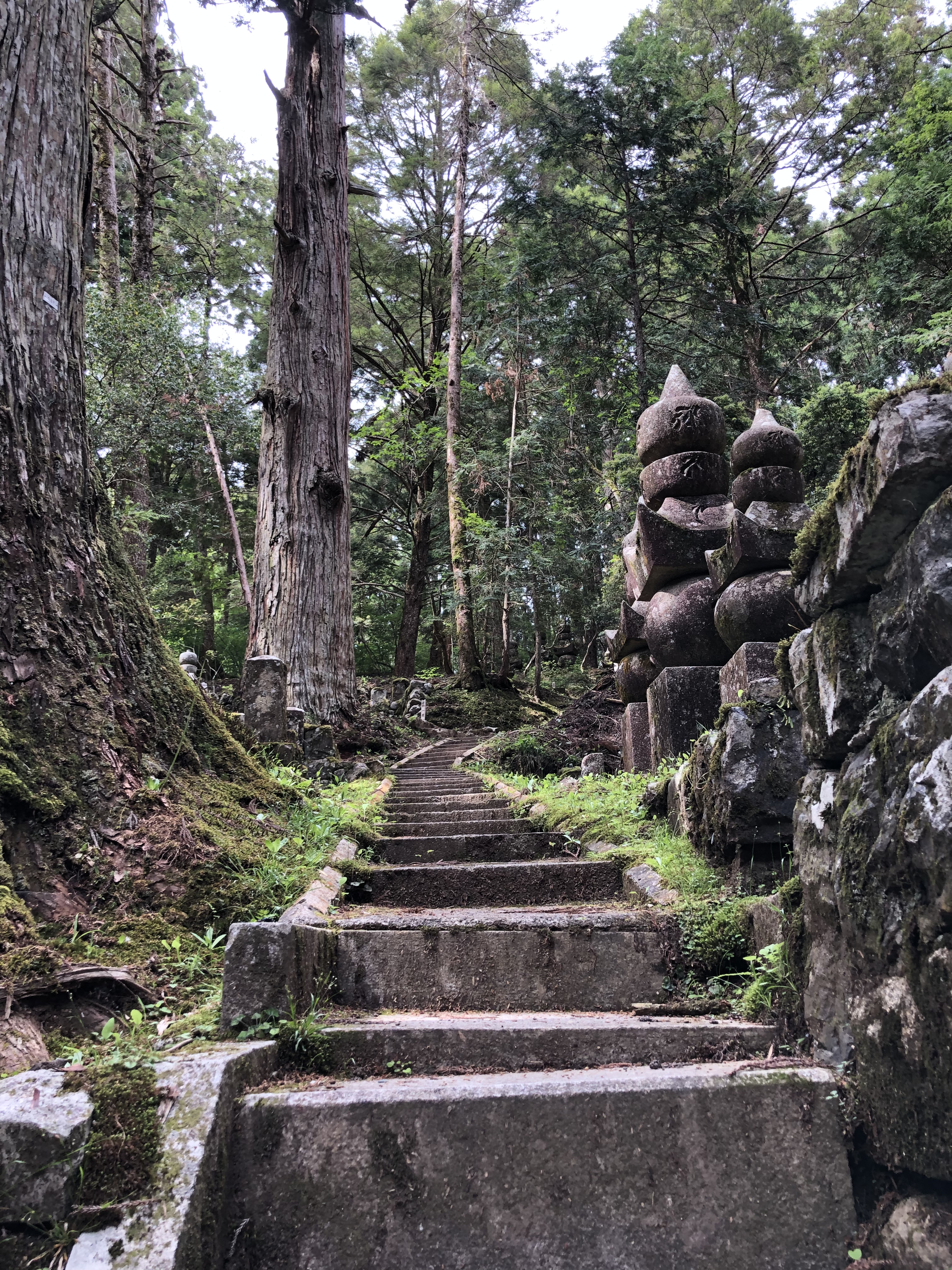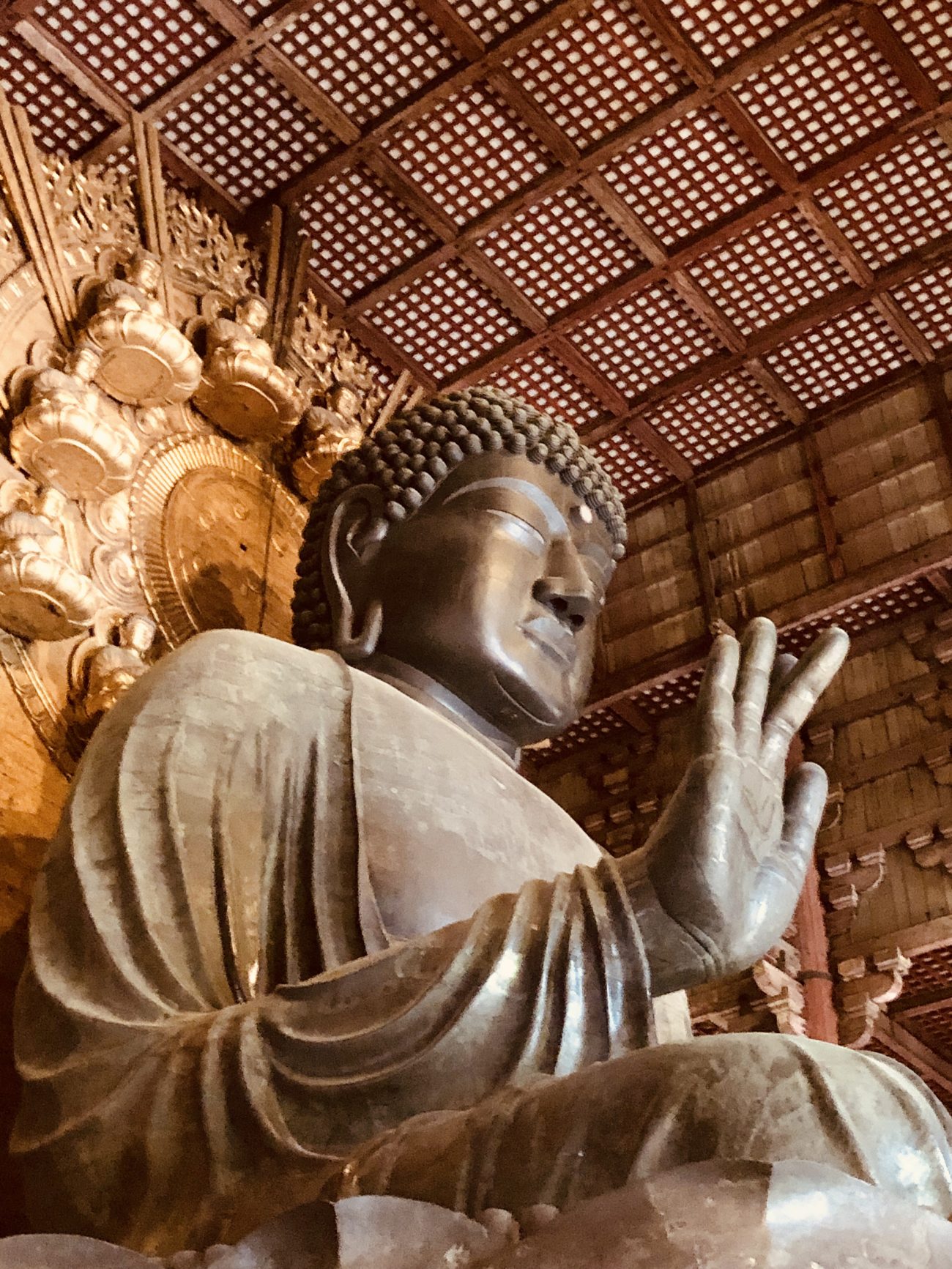The secluded temple town of Koyasan has a long history as a sacred place, beginning in the early ninth century when Kobo Daishi wandered Japan in search of a suitable place to build a center for the religion he had founded, Shingon Buddhism. After years of searching, he settled on the wooded top of Mt. Koya and in 826 began construction of the original Garan complex. Today you can find more than a hundred temples here.
Many temples in Koyasan invite guests to stay overnight, and we stayed two nights in Souji-in, known for some of the finest vegetarian cuisine. We had spacious rooms, secluded in the back of a newer wing of the temple, a serene view of the gardens, and a bathroom that took up three rooms, including one with a wooden Japanese soaking tub. As is typical in traditional Japanese lodging, when we went to dinner, they had moved our table aside and laid out our futons for sleeping.
We explored part of the town before dinner, wandering down a scenic path, finding a red wooden bridge and then exploring the Garan complex, the first monastic complex entirely dedicated to the teaching and practice of Shingon Buddhism.
It includes the Kondo Hall, a large wooden temple hall where major ceremonies are held, and Konpon Daito (great Fundamental Pagoda), the tallest building in Koyasan. Completed in 876, it’s an early form two-storied pagoda and a symbol of Koyasan, a town we discovered was filled with a peaceful beauty.
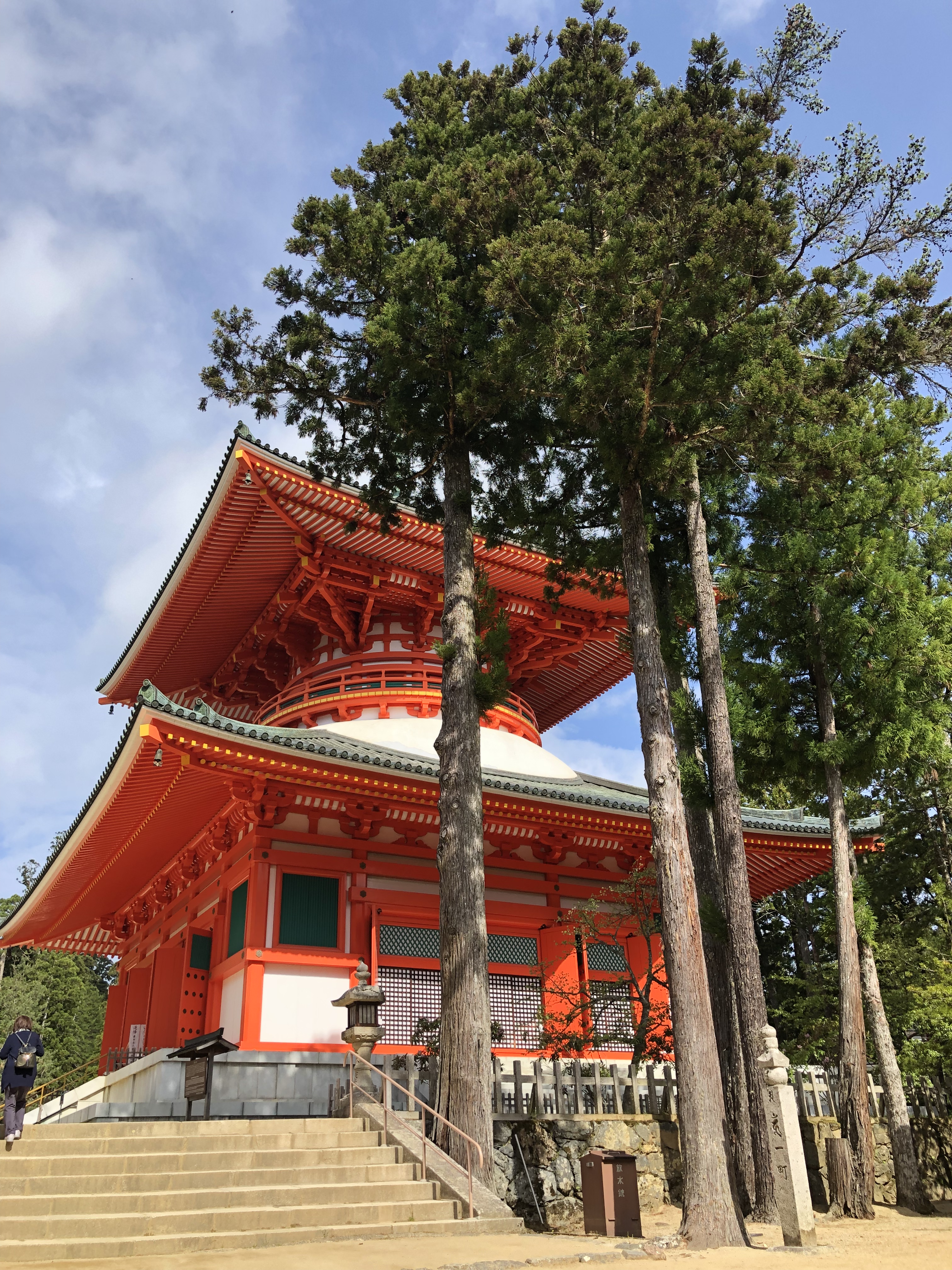
Dinner was at 7 pm and they called us at 6:59 pm to make sure we were coming. The meal and the ones that followed were Buddhist vegetarian cuisine (Shojin Ryori). Made with the “delicate enhancement of a natural taste” and the use of limited ingredients, Shojin Ryori is based on the concept of five flavors, five cooking methods and five colors. Each meal includes a grilled dish, a deep-fried dish, a pickled dish, a tofu dish and a soup dish.
Not only was it some of the best vegetarian food we had ever enjoyed, but also some of the most delicious food of any kind. Each meal was perfectly balanced, served by a monk and was a delight for the eyes and the palate.
The next morning, we set off to explore more of the town and started our day (after our breakfast at the temple) with coffee at the Powerstone Café. The barista, who clearly liked Snoopy, was a wonderful host.
We continued up the hill through the Daimon Gate, the traditional entrance to Koyasan, and entered a pilgrimage route that we followed a few kilometers up Mt. Benten Dake and down to Nyoindo, a temple on the periphery of Kyosan. It is the last temple standing built especially for women. Here we also found the Koyamaki Protected Forest, a forest of umbrella pines extinct everywhere but in Japan and Korea.
We moved on to Okunoin, where more than 200,000 grave stones and pagodas stretch through a forest of ancient, towering cedar trees. There was a powerful, awe-inspiring energy along this sacred space, a 2km walk to Kobo Daishi’s mausoleum that we will never forget. We plan to visit again and walk it at night, when the path is lit by lanterns.
The next morning, we joined a 6 am morning prayer ceremony. When the head monk was done chanting the sutra, he sat with us, giving a short talk to those in attendance—all in Japanese. Fortunately, a young monk handed us a one-page summary of his talk and the main message was this:
All we can do is to appreciate the past and for the future, to wish and pray for the peace for those around you.
Next Up: The Kumano-Koda Pilgrimage Walk
A visit to Nara is one of the best day trips from Kyoto. It was the first permanent capital of Japan and home to the Daibutsu (Great Buddha) at Todaiji Temple, as well as other temples and shrines, and the Nara National Museum.
Travel Tips: From Kyoto, we took the Kintetsu line to Nara Kintetsu station, which is closer to the Great Buddha than the JR station. Once you get in Kyoto Station, which is really two stations, the JR and Kintetsu, it’s easy to follow signs to Kintetsu. We suggest you spring for the Kintetsu direct express (tokkyu), which is faster and more comfortable. It’s a short ride on a modern train.

Sacred Deer
Once you come out of the station, turn right and walk past the park and follow the crowd to Todaiji Temple and the Great Buddha. On the way, you walk past Nara Park, where you’ll be greeted by hundreds of deer. Once considered sacred, they have roamed free for 13 centuries and today look for handouts or a scratch.
Daibutsu
Once you arrive at Todaiji Temple, you’re overwhelmed by the scale of Daibutsu-den (Hall of the Great Buddha), the largest wooden structure in the world. No matter how many people are there, it can easily accommodate them.
Inside the hall is the Great Buddha, the largest bronze Buddha in the world. The original was completed in the 8th century. Nearly 50 feet tall and 500 tons, it looks down at you as you make your way in and around the great hall. There are Buddhas on either side, and a pair of guardians in the hall, Komokuten and Bishamonten.
Behind the Great Buddha is a large pillar with a hole that is said to be the size of the Buddha’s nostril, and people—schoolchildren—can crawl through. A story goes that by squeezing through, you humble yourself enough to gain enlightenment in your next life.

From Daibutsu-den, we walked about 10 minutes up hill through a park to Nigatsudo Hall, a sub-complex of Todaiji. It’s a beautiful walk with plenty to see on the way, and as you walk around the hall, you’ll find a nice view over the city.
Nara National Museum
Rain began to fall so we went to the Nara National Museum, and we weren’t disappointed. The museum has two buildings – the older building with a vast and interesting permanent Buddhism collection, and a newer building with special collections. We were lucky to get a look at a Yohen Tenmoku tea bowl from the Fujita Museum. The bowl, from the 12th or 13th century, has a tenmoku glaze with iridescent spots that look like the stars in a galaxy.
